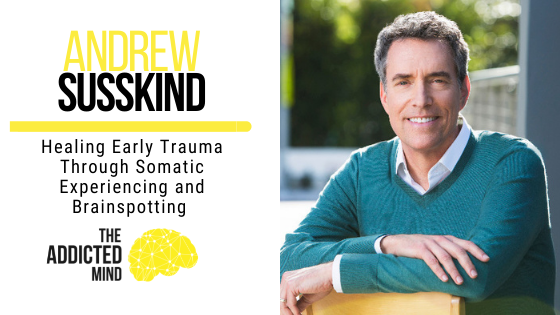We have to work and deal with our internal and early trauma. This can be more difficult to see and process without a reliable, trustworthy “other” in our lives. Sometimes it even takes an expert who can walk us through that journey in order for us to get to that safe space for healing and recovery.
In Andrew Susskind’s book, It’s Not About the Sex: Moving from Isolation to Intimacy after Sexual Addiction, he covers some themes and different areas of healing that can happen beyond just stopping destructive behavior.
As a licensed clinical social worker, Somatic Experiencing practitioner, Brainspotting practitioner, and certified group psychotherapist, Andrew explains the role of nervous system regulation in healing trauma.
How Nervous System Regulation Works
When somebody cuts you off on the freeway, oftentimes what happens in our nervous system is we go into either fight or flight. We can either get rageful or completely shut down, depending on our particular nervous system.
Now, one of the keys to regulating the nervous system is knowing when we’re dysregulated. A dysregulation could be in the form of upregulation (ex. rage, panic, or hypervigilance) or downregulation (ex. disconnection, dissociation, depression, or shutting down). Someone who feels most comfortable in their skin feels calm, peaceful, grounded, and hopefully resourceful, resilient, and buoyant. This is the first part of the nervous system regulation.
Somatic Experiencing and Brainspotting are both trauma healing modalities focused on nervous system regulation. Brainspotting helps release and discharge stored memories from any time in the past that was too much to process back then.
The Impact of Reliable Relationships in Recovery
Memories are the blueprint of what makes us who we are and how we relate to others. Whether we feel safe with others, trusting, upset, or abandoned, these are feelings that develop early on in life, usually with parents or caregivers.
Attachment can show up as either anxious attachment or avoidant attachment. If you scratch the surface on anyone who’s sexually compulsive, you’re going to find some kind of avoidant attachment within them. Anxious attachment, conversely, is typically present in the person who is a love or intimacy addict and who is constantly seeking attachment. Oftentimes, it’s the serial dater or someone very involved in the process of trying to find a partner. Usually, they haven’t become available themselves for intimacy.
Now, if we’re connected within and to one another and to something greater than ourselves, that’s going to create a platform for healing.
If you want to learn more about healing early trauma through nervous system regulation, check out Episode 142: Healing Early Trauma Through Somatic Experiencing and Brainspotting with Andrew Susskind.

